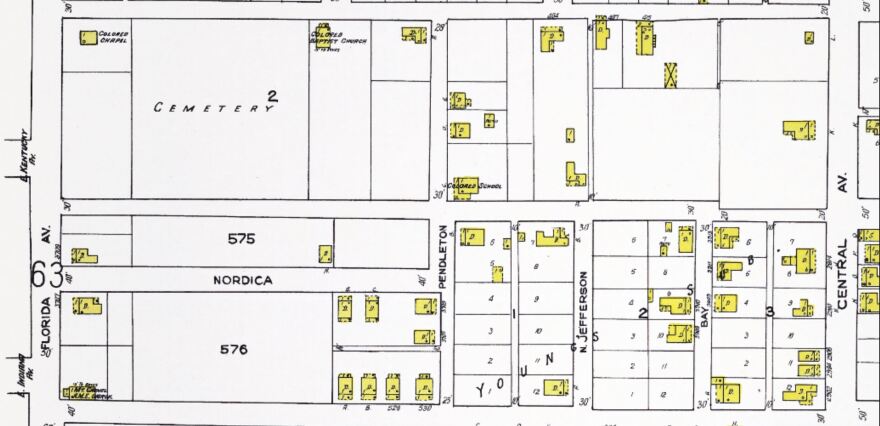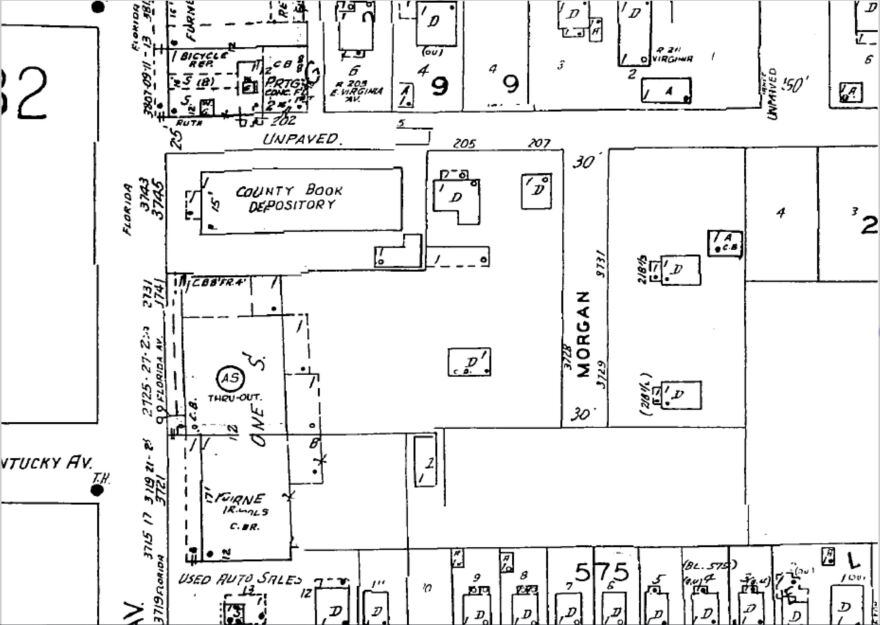“Zion Cemetery isn’t lost – Zion Cemetery was erased.”
That was the message from one University of South Florida archaeologist at a recent presentation at the Tampa Bay History Center about Zion Cemetery, which is believed to be the first African American cemetery in Tampa.
Zion was founded in 1901, but sometime after 1925, it simply disappeared from city maps.
What became of the people buried there is a mystery that Tampa Bay Times reporter Paul Guzzo has been looking into for the last year-and-a-half.
“It was crazy, I never really believed the bodies were there. And if you read my earlier article, I was very certain to say the bodies were lost, not there,” said Guzzo. “I just wanted to believe that they were moved, and the records were lost.”
But his investigation shows that appears not to be the case. It’s becoming more and more apparent that dozens, if not hundreds of bodies-- remain on the two-and-a-half acres that once made up the cemetery – grounds where a public housing complex and a pair of private companies now stand.

Acting on Guzzo’s information, Rebecca O’Sullivan, coordinator for the Florida Public Archaeology Network’s office at USF, began by looking at historic maps of the cemetery grounds and comparing them to modern day maps.
After that, she conducted ground-penetrating radar scans of the property owned by the Tampa Housing Authority. What she found when she ran those scans through her computer shocked her.
“Compiling it all together, putting it together, into these slices, these depths beneath the surface. And it was done, and it popped up on my screen and seeing the results and seeing these shapes that are the exact shape, size, depth of a coffin, it really was like a punch to the gut to see that,” said O’Sullivan.
Guzzo experienced a similar feeling when Tampa Housing Authority officials shared that news with the almost 30 families who lived in the five buildings of the Robles Park Village housing complex that had been built on top of a cemetery.
“When the announcement was made… it was chilling to see the reaction in the room,” said Guzzo. “People were sobbing, making the sign of the cross, a couple people had to walk out. It was hard to be there for that.”
So far, O’Sullivan and her fellow researchers have detected around 130 caskets – but that’s just on the Authority’s property.
“We were able to go right up next to it, right up to next to people's porches, right up next to the buildings and pick up on some objects that could be burials that are very close to the buildings,” said O’Sullivan.

According to Leroy Moore, Chief Operating Officer of the Tampa Housing Authority, those 30 or so families are being moved in the next 90 days.
“We're paying for all the costs, we're finding them replacement housing, their rent is going to not change in their new homes, we're providing a lot of consultation and support and counseling to them as they come to reality with the fact that they've lived on top of a cemetery,” said Moore, who adds that this won’t be the end of the work on the site.
“We will fence up that area, cordon off and do further archaeological research on that area, and eventually tear down those buildings so that this becomes a memorial cemetery once again,” he said. “We're going to confirm with the addition of ground-penetrating radar testing that bodies were not buried beyond the perimeter of those buildings.”
Then, the redevelopment of the remainder of Robles Park Village – which was already scheduled – will continue.
“The rest of the families (in Robles Park Village) are living in 65- to 70-year-old public housing that today doesn't meet the basic needs of family living,” said Moore. “Because of the age and the condition of the property, we're going to be redeveloping Robles. Next year, we'll start with that planning process, probably in early 2021, we will start relocation of the rest of the Robles Park residents.”
Guzzo credits the Authority for acting as quickly as they have.

“It's been unbelievable how fast they've moved,” he said. “I know once the residents are relocated, they're going to allow the archaeologist back in to start doing ground truthing, which means you go into the earth – you don't go deep enough to hit the casket, but you just go deep enough to see the stain of the caskets so they can have more evidence and no one can ever question that there are caskets there.”
And there may be hundreds of graves, as the Tampa Bay Times has reported, nearly 800 death certificates list Zion as a burial space, and there’s evidence only a handful were ever moved.
The two other entities that own property on what used to be the rest of the cemetery are Sunstate Wrecker Service and Tampa restaurateur Richard Gonzmart.
Dennis Creech, the owner of Sunstate, told Guzzo earlier this month, “I am okay with doing whatever I can do to make this right.”
And, according to the Times, Gonzmart said he will take steps soon to see if there are graves on the section of property where his warehouses now sit, but he doesn’t think there are any.
“I believe we will find that there are no bodies,” he said last month. “It’s a gut feeling.”
Meanwhile, state Senator Janet Cruz is pushing for $450,000 in state funds to continue the research, including identifying next of kin for those buried in Zion, and another $50,000 towards creating a memorial at the site.
O’Sullivan says that this kind of thing – a cemetery being erased from a map and those buried there being forgotten – happens more than people might realize.
“There are several other cases in Florida: a couple years ago, there was an African American cemetery in Deerfield Beach where a very similar thing happened, the cemetery was discovered when a developer was trying to put in some condos on the property,” she said. “The city was able to get money to purchase the property and made it into a memorial park.”
“There's another example right now in Tallahassee, where there is an even older cemetery that dates back to the times of slavery that is now located under a golf course there,” O’Sullivan added. “There are stories like this all over the country, it's not just something we see in Tampa, it's not just something we see in Florida.”
But for her, this kind of work to make sure that the past isn’t forgotten is exactly why she got into archaeology.
“I think a lot of times people think that archaeology is just looking at ancient stuff that no one really cares about,” she said. “But to me, archaeology is about looking at issues that affect people today, and how can we make life better for people today? How can we bring history to the forefront, to educate the public and that's what we're here to do.”
A Progression of Zion Cemetery on Tampa City Maps








